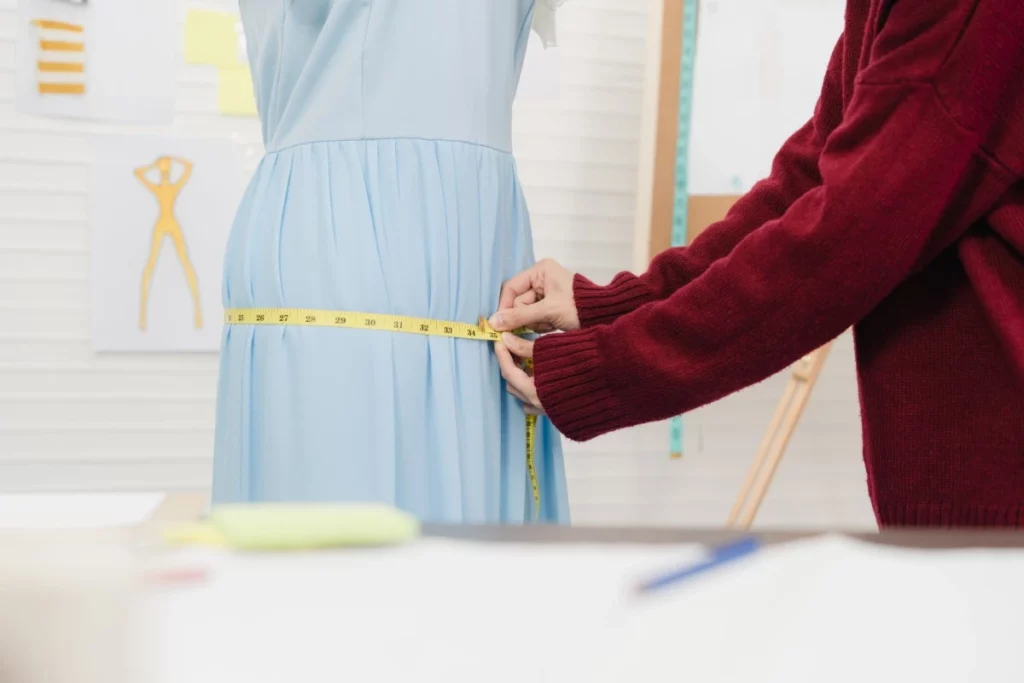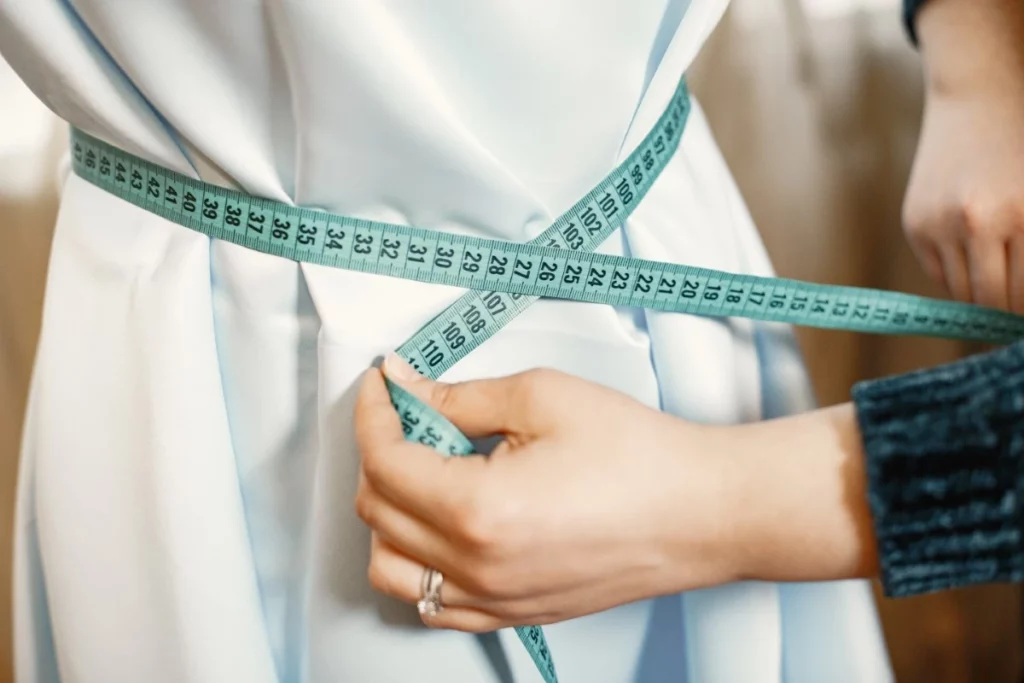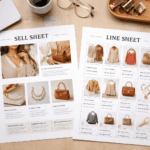
In the world of fashion design, precision is paramount. Creating garments that fit perfectly and look stunning requires accurate measurements. A tape measure is one of the most essential tools for a fashion designer. Understanding how to read a tape measure correctly can significantly impact the outcome of your designs by ensuring an accurate measurement. This comprehensive guide will take you through the basics and intricacies of using and reading a tape measure, tailored specifically for fashion designers.
Understanding the Tape Measure
Before diving into the actual reading process, it’s crucial to understand the components of a tape measure:
- Tape: The flexible, retractable strip marked with measurement units, usually made of fiberglass, plastic, or cloth for flexibility and durability. Using a measuring tape accurately is essential for precise measurements.
- Housing: The case that holds the tape, often made of plastic or metal, ensures the tape is protected and easy to retract.
- Hook: The metal or plastic tab at the end of the tape that you can hook onto the edge of an object to secure the tape. The metal hook helps to hold the blade in place and can be pressed against surfaces when not measuring.

Measurement Units
Most tape measures feature both imperial (inches and feet) and metric (centimeters and meters) units. Knowing how to read a tape measure that provides imperial measurements is crucial for precise readings and accurate measurements in various industries and everyday use. Depending on your region or project requirements, you might use one system more than the other.
Fashion designers often use both systems, especially when working with international clients or patterns. Tape measures commonly found in imperial units include specific markings and designations such as inch designations, half inches, quarter inches, eighth inches, and sixteenth inches.

Reading the Imperial System
- Inches and Feet: The tape is divided into feet and inches. Each foot is marked by a number (1, 2, 3, etc.), and each inch is further divided. The inch markings on a tape measure include half-inch, quarter-inch, eighth-inch, and sixteenth-inch markings.
- Inch Marks: Each inch is divided into smaller fractions. The most common fractions are:
- 1/2 inch: The half-inch marks are positioned between the one-inch marks, often without designated numbers. Learn to locate and interpret these half-inch marks for accurate measurements.
- 1/4 inch
- 1/8 inch
- 1/16 inch Each fraction has a distinct line length, making it easier to identify:
- The longest lines represent the inches.
- The second longest lines represent half inches. The half-inch mark is crucial for precise measurements.
- The next set of lines represents quarter inches.
- The smallest lines represent eighths and sixteenths of an inch. These thin lines help differentiate the various fractional measurements.
Example: Reading an Imperial Measurement
If the measurement falls on the 3-inch mark and four small lines past it, you are looking at 3 and 1/4 inches. This level of precision is crucial in fashion design, where even a small deviation can affect the fit and look of a garment.

Reading the Metric System
- Centimeters and Meters: Metric tapes are divided into centimeters and meters. Each meter is marked by a number (1, 2, 3, etc.), and each centimeter is further divided. To read a metric tape measure, the numbers should be read in centimeters and millimeters, based on the ‘tens’ system.
- Millimeter Marks: Each centimeter is divided into 10 millimeters (mm). Metric tape measures include features and markings such as centimeters and millimeters, making it easy to measure accurately.
Example: Reading a Metric Measurement
If the measurement falls on the 4 cm mark and three small lines past it, you are looking at 4.3 cm. This precision is particularly useful in pattern making and fabric cutting, where accurate measurements ensure the pieces fit together perfectly.

Tips for Accurate Measurements
- Hook Position: Ensure the hook is either pushed or pulled tight against the object you’re measuring. The small movement in the hook is designed to account for its thickness.
- Flat Surface: Keep the tape flat against the surface to avoid sagging, which can lead to inaccurate measurements. Additionally, ensure the tape is straight when measuring to maintain accuracy.
- Measure Twice: It’s a good practice to measure twice to confirm your reading. Understanding tape measure markings in both metric and imperial systems is crucial for precise measurements.
- Use a Flexible Tape: For body measurements, use a flexible tape measure made of cloth or plastic. It molds to the contours of the body, providing more accurate readings.
- Consistent Tension: When measuring fabric or a body, ensure the tape measure is snug but not too tight. Consistent tension prevents distortions in measurements.
Specific Applications in Fashion Design
Body Measurements
Accurate body measurements are the foundation of well-fitting garments. Here’s a detailed guide to taking precise body measurements:
1. Bust/Chest: Measure around the fullest part of the bust/chest, keeping the tape measure horizontal and snug but not tight.
2. Waist: Measure around the narrowest part of the waist, usually just above the navel.
3. Hips: Measure around the fullest part of the hips, typically 7-9 inches below the waist.
4. Inseam: Measure from the crotch to the bottom of the ankle, along the inside of the leg.
5. Arm Length: Measure from the shoulder point to the wrist, with the arm slightly bent.
6. Shoulder Width: Measure from one shoulder point to the other across the back. Check out more about shoulder measurements in our article.

Pattern Making
When drafting patterns, precision is critical. Here’s how to ensure your patterns are accurate:
1. Drafting Blocks: Use your body measurements to create basic blocks, which serve as the foundation for more complex patterns.
2. Adding Seam Allowances: Always add seam allowances to your pattern pieces. The standard seam allowance is 1/4 inch to 1/2 inch, but this can vary depending on the type of seam and fabric.
3. Grading: When creating different sizes, use precise measurements to grade your patterns. Each size increment must be consistent to ensure a proper fit across all sizes.
Fabric Cutting
Cutting fabric accurately ensures that your pieces fit together perfectly during construction:
1. Grainline: Always measure and align your pattern pieces with the fabric’s grainline to prevent distortion and stretching.
2. Marking: Use a fabric marker or tailor’s chalk to mark your measurements and cutting lines clearly.
3. Using Weights: Place weights on your fabric to keep it flat and stable while measuring and cutting.
Common Mistakes to Avoid
Even experienced designers can make mistakes when using a tape measure. Here are some common pitfalls and how to avoid them:
1. Not Starting from Zero: Ensure the tape measure starts from the 0 mark. Some tapes have a small space before the first mark, which can throw off your measurements.
2. Ignoring Wear and Tear: Over time, tape measures can stretch or the markings can fade. Regularly check your tape measure for accuracy and replace it if necessary.
3. Measuring Over Clothing: When taking body measurements, measure over thin, fitted clothing or directly on the skin to ensure accuracy.
4. Not Recording Immediately: Write down measurements immediately to avoid forgetting or mixing them up.
Advanced Tips for Professional Fashion Designers
1. Digital Tape Measures: Traditional tape measures are reliable, but digital tape measures offer a new level of precision and convenience. These devices display measurements on a digital screen, eliminating the possibility of human error in reading small fractions or millimeters. Some advanced models come with additional features such as:
- Memory Storage: Store multiple measurements in the device for easy retrieval.
- Conversion Functions: Instantly convert between imperial and metric units.
- Bluetooth Connectivity: Sync measurements with design software on your computer or smartphone.
2. Measuring Tools Integration: Modern design software often includes tools for importing and utilizing measurements directly from digital tape measures and other devices. Leveraging these integrations can streamline your workflow and reduce the risk of errors. Here’s how to make the most of these tools:
- Direct Input: Use software that allows for direct input of measurements from your digital tape measure.
- Pattern Drafting: Utilize software features to draft patterns directly from imported measurements, ensuring accuracy and consistency.
- Automated Grading: Automate the grading process within your software, using precise measurements to create different sizes accurately.

3. Continuous Learning: The fashion industry is constantly evolving, and staying updated with the latest measurement techniques and tools is essential for maintaining a competitive edge. Here are some ways to keep learning:
- Workshops and Seminars: Attend industry workshops and seminars to learn about new tools, techniques, and trends.
- Online Courses: Enroll in online courses that offer advanced training in fashion design and measurement.
- Industry Publications: Subscribe to fashion industry publications and journals to stay informed about the latest developments.
Conclusion
Reading a tape measure accurately is a fundamental skill for any fashion designer. Mastering this skill ensures your garments fit perfectly, your patterns are precise, and your fabric is cut accurately. By understanding both the imperial and metric systems, practising with your tape measure, and following the tips provided in this guide, you’ll be well-equipped to take precise measurements for any fashion project. Happy designing!
By incorporating these practices into your daily routine, you can ensure that your measurements are consistently accurate, leading to better-fitting garments and more satisfied clients. Accurate measurements are the foundation of successful fashion design, and with the right tools and techniques, you can achieve the precision needed to bring your creative visions to life.





Leave a Reply